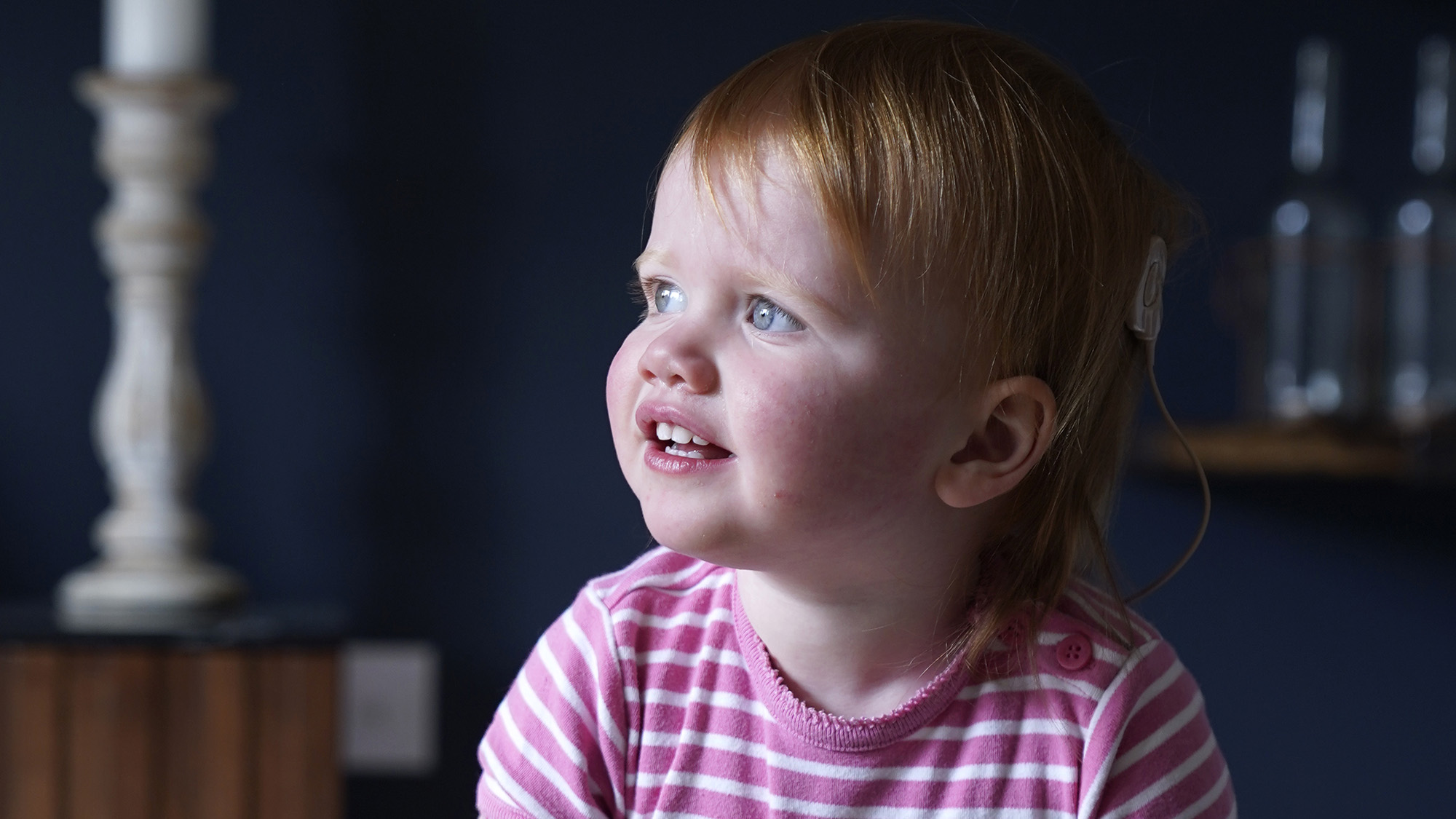

A British toddler born with a genetic condition resulting in deafness can now hear in one ear thanks to a pioneering new gene therapy treatment.
The case was reported at the American Society of Gene & Cell Therapy’s annual meeting which is taking place this week in Baltimore, MD. The girl—18-month-old Opal Sandy from Oxfordshire—received an experimental treatment for auditory neuropathy, a condition that results from a mutation in a gene called Biallelic otoferlin gene (OTOF), as part of an ongoing clinical trial.
As the BBC reports, the mutation results in incorrect development of tiny hairs in the cochlea that are crucial for magnifying sound waves and converting the resultant information into signals that can be passed onto the brain. This results in what the case description describes as “severe-to-profound sensorineural hearing loss.”
Until now, this hearing loss has been treated with cochlear implants—Opal’s older sister Nora, who also has the genetic mutation, has these in both ears, and Opal herself has one in the ear that didn’t receive the new treatment. While implants bypass the damaged areas to send sound directly to the auditory nerve, the new treatment aims to repair the damage instead. It does so by repairing the faulty gene, which in turn prompts the growth of functional hairs. To do this, the healthy gene is placed into an otherwise inert virus—“a dual adeno-associated virus (AAV1) vector designed for intracochlear delivery of a full-length copy of the human OTOF gene.” This virus, referred to as DB-OTO, is injected into the cochlea, and facilitates the replacement of the faulty gene with the healthy one.
The BBC reported on the successful trial of a similar treatment in mice back in 2017, and at the time, the scientists behind that study predicted that the technique could be extended to humans “in the near future.” Opal’s case is the first attempt at doing so, and so far, it seems to be a success. She received the treatment at 10 months of age, and as the case description reports, “twelve weeks after treatment [Opal] did not have any side effects related to the treatment, and improvements in hearing were reported in the treated ear.” Now, more than six months later, her hearing has gone from strength to strength: “[Opal] can hear sounds as soft as a whisper and is starting to talk.”
While the case report describes the results as “encouraging,” The Guardian spoke to the girl’s mother, who summed the improvement up rather more charmingly: “Bonkers.” It’s not all sweetness and light, though, because Opal’s newfound hearing has apparently led to the development of a new hobby: “Slamming cutlery on the table to make as much noise as possible.”
